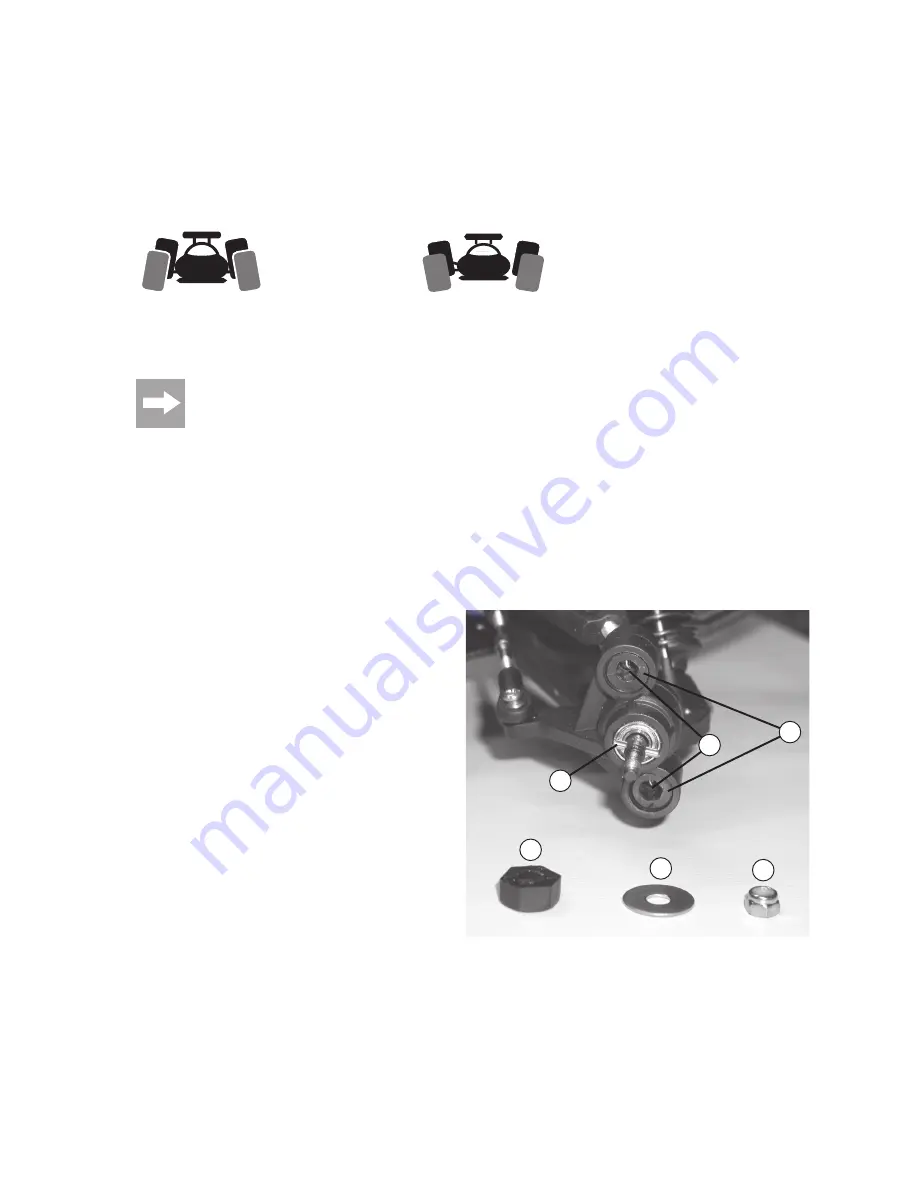
44
9. Adjustment Possibilities for the Model Car
a) Setting the Camber
The camber is the inclination of the wheel level as viewed from the front (vertical).
Negative inclination
Positive inclination
(Top wheel edge points inwards)
(Top wheel edge points outwards)
The setting of the wheel is exaggerated in the two figures in order to make the difference between nega-
tive and positive cambers more obvious.
The setting on the model vehicle should of course not be as extreme as shown! This not only leads to
uncontrollable driving behaviour, but also to very quick wearing away of the inner and outer tyre edges!
• A negative inclination of the front wheels increases the lateral cornering powers of the wheel when driving through
bends, the steering reacts more directly and steering forces are reduced. At the same time the wheel is pushed onto
the axle spur in the direction of the axle. This stops axial bearing clearance, the driving behaviour is calmer.
• A negative inclination on the rear wheels reduces the tendency of the rear of the vehicle to swerve in bends.
• Setting a positive camber on the other hand reduces the cornering force of the wheels and should not be used.
Setting Front Axle Camber:
First of all, the front wheel is to be removed (the picture
shows the wheel nut (C), the lining disc (D) and the
wheel driver (E). When putting on the wheel driver,
make sure that the driving pin (F) is exactly in the slot
of the wheel driver (E)!
Twist the metal ball screw (B) on the inside to set the
camber.
Do not, however, twist the external plastic grub screw
(A), this is for fixing the ball screw in the axle spur.
The camber is set by twisting the two screws in oppo-
site directions (e.g. upper screw (B) one half turn clock-
wise, bottom screw one half turn anti-clockwise).
If the screws are turned in the same direction, this will
alter the alignment and not the camber!
Figure 2
A
B
E
D
C
F
Summary of Contents for 23 73 00
Page 118: ...118 ...
Page 119: ...119 ...
















































